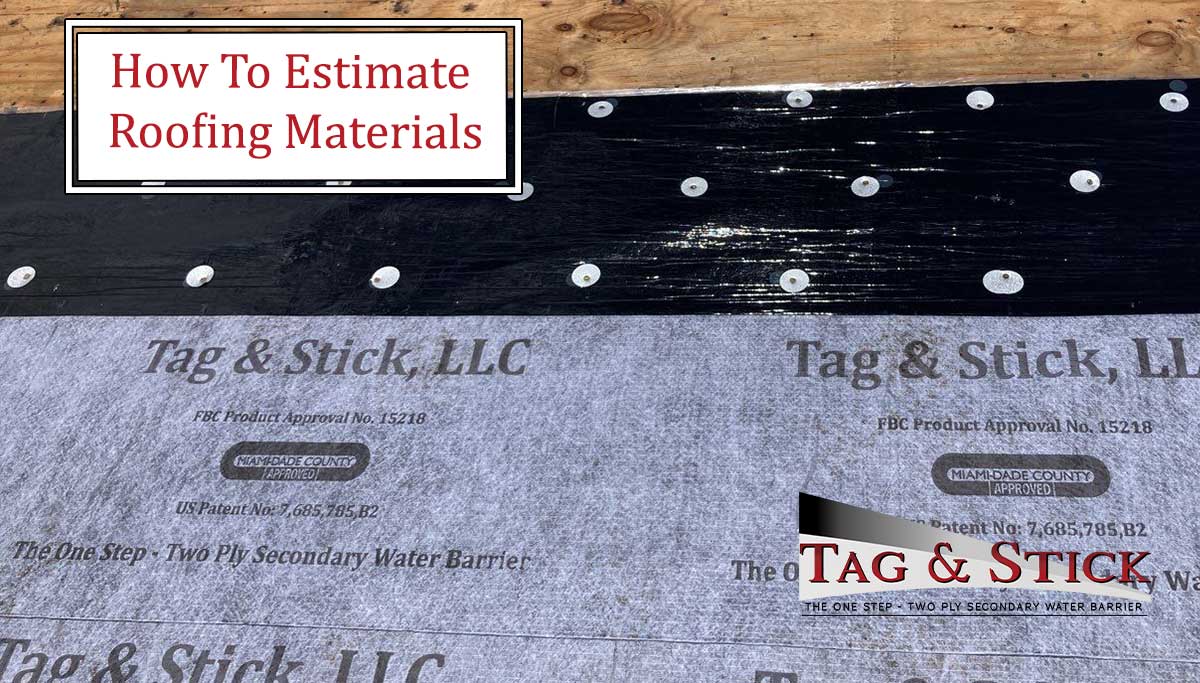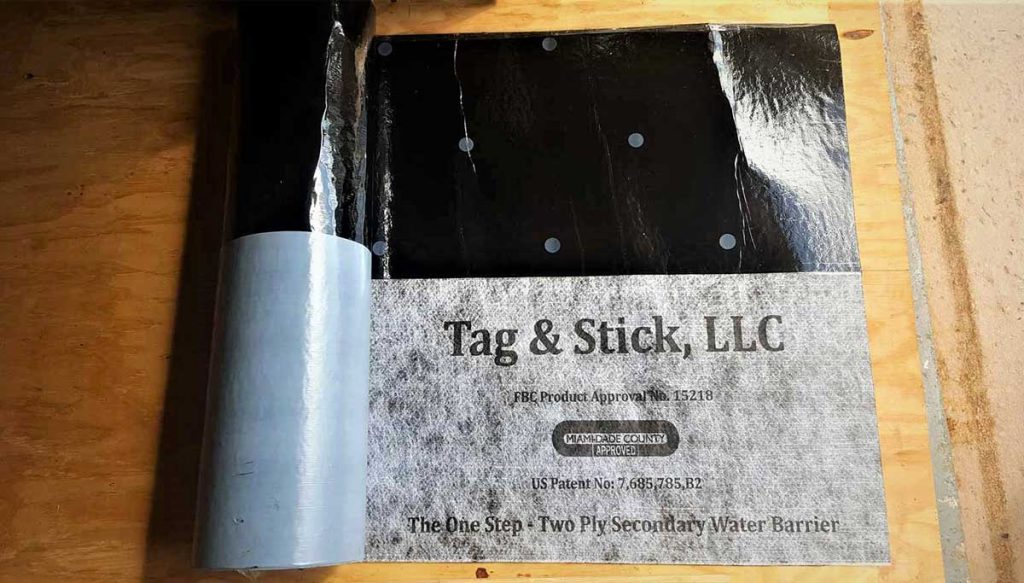How To Estimate Roofing Materials

When it comes to roofing projects, one of the fundamental steps in the planning process is estimating the required roofing materials accurately. Whether you’re a homeowner estimating repair costs for your leaky roof or a contractor embarking on a new roofing installation, a precise estimate of the materials needed is essential to ensure a successful and cost-effective project. A well-executed estimation not only saves you time and money but also helps minimize waste and potential setbacks along the way.
Assessing Roofing Needs
Before diving into the intricate process of estimating roofing materials, starting with a comprehensive assessment of your roofing needs is crucial. This initial step sets the foundation for an accurate material estimation.
Repair or Replace
Begin by evaluating the condition of your existing roof, if applicable. What you’ll be looking for is any obvious signs of leaks, damage, or wear and tear. Depending on the severity of the issues, you may need a partial repair or a complete replacement. Understanding the state of your current roof is paramount because it impacts the type and quantity of materials required.
Location & Climate
Consider your location and the local climate. Regions prone to extreme weather conditions, such as heavy rainfall, wind, or intense heat, may require specific roofing materials that can withstand these challenges. South Florida certainly can claim all of these challenges! Additionally, think about the architectural style of your home or building. Different roof types, such as gable, hip, or flat roofs, demand varying materials and have unique measurements. You should take your budget and aesthetic preferences into account during this assessment. By thoroughly evaluating your roofing needs, you’ll be better prepared to move forward with an accurate estimation of materials, ensuring a successful roofing project.
Measuring the Roof’s Dimensions
Accurate measurement of your roof’s dimensions is the cornerstone of any successful roofing material estimation. A small measurement error can lead to either over or under-ordering materials, resulting in unnecessary expenses or project delays. To ensure precision, follow these technical tips when measuring your roof:
Use Digital Tools
If you’re a contractor, consider investing in quality laser distance measurers or digital roofing apps or devices to streamline the measuring process. These tools provide precise measurements with minimal effort. Start by measuring the length and width of each section of your roof, recording the dimensions accurately. If you’re a homeowner, then you should look for contractors who are making use of the latest roofing technologies.
Break It Down
If your roof has a complex structure with multiple slopes, break it down into smaller, more manageable sections. Measure each section separately and then add the measurements together to get the total area. For irregularly shaped sections, divide them into simpler geometric shapes (rectangles, triangles) and calculate each separately. Shingles, tiles, and underlayment are sold in what the industry calls “squares.” Each square is equal to whatever the calculated square footage of your roof is, divided by 100 e.g. 1340 square feet = 13.4 squares.
Account for Overhangs & Wastage
Don’t forget to measure any overhangs or eaves, as they contribute to the roof’s total square footage. Extend your measurements to include these areas accurately. Another area where you could account for a little extra material is waste. Every roof will involve some trimming, unusual corner shapes, and mistakes when cutting. A safe bet would be to account for an extra 10 or 15% in roofing materials.
Include Pitch or Slope
Measure the roof’s pitch or slope accurately. The pitch is usually expressed as a ratio (e.g., 4:12), representing the rise in inches for every 12 inches of horizontal run. Understanding roof slopes is crucial because it affects the quantity of roofing materials needed. You can use an inclinometer or a smartphone app with a built-in level to measure the pitch.
Consider Roof Accessories
If your roof has chimneys, vents, skylights, or other protrusions, measure their dimensions and locations precisely. These features affect the quantity of flashing and other specialized materials required.
By employing these technical measurement techniques, you’ll gather the precise data needed to estimate your roofing materials accurately. Remember that investing time in thorough measurements at this stage can save you from costly errors later in your roofing project.
Types of Roofing Materials For Estimation
When conducting a roofing estimation, you’ll have to consider the shingles (covering), underlayment, flashing, and tooling. All of these will be purchased in large quantities, so it’s critical to make sure you get your estimates close.
Shingles
Shingles are a primary roofing material used to cover and protect the roof’s surface. They come in various materials, with the most common types being asphalt shingles, wood shingles, and composite shingles.
Underlayment
Roof underlayment is a critical component of a roofing system that sits beneath the shingles and provides an additional layer of protection against water infiltration. The most suitable underlayment is a self-adhering underlayment as it complies with Florida building code wind load requirements. An excellent candidate for this is Tag & Stick’s 2-ply, modified bitumen, self-adhering underlayment. It is well-marked to include the correct spacing for mechanical attachment and also demarcates the codified overlap required.
Flashing
Flashing is a material used to seal joints and transitions on a roof, preventing water penetration in vulnerable areas. Common types of flashing materials include:
Metal Flashing
Typically made from materials like aluminum, copper, or galvanized steel, metal flashing is used around roof penetrations such as chimneys, vents, skylights, and valleys where two roof slopes meet. Metal flashing is durable and resistant to corrosion when properly maintained.
Drip Edge
Drip edge flashing is installed along the roof’s edges to prevent water from seeping under the shingles and causing damage to the fascia and soffit. It also helps direct water into the gutters.
Roof Nails
Calculate Nails per Shingle
If the manufacturer specifies the number of nails per shingle, multiply this by the total number of shingles needed based on your roof area calculations. This will give you a rough estimate of the number of nails required.
Mechanically Attached Underlayment
Tag & Stick’s unique underlayment benefits homeowners by not only being self-adhered but also being mechanically attached. Based on the quantity of underlayment that will be required, you can estimate how many nails will be needed by adding the total attachment marks per roll of underlayment.
Tag & Stick, LLC – Leading Underlayment Product

For well over 25 years, Tag & Stick, LLC has been leading the underlayment industry with our unique take on self-adhering underlayment. We’ve made the roofing contractor’s job easier by providing all that is needed to ensure a simple, safe, and code-approved installation. Call us at 954-255-3107 for more information on this incredible product.